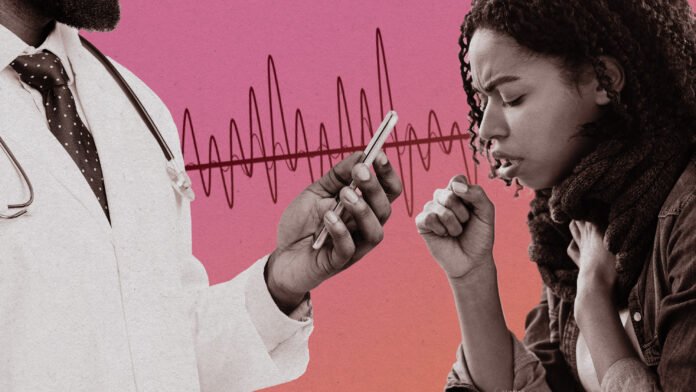
The Kenya Medical Research Institute is conducting research to develop an AI-powered mobile application for the diagnosis of respiratory diseases, including tuberculosis.
Dr. Videlis Nduba and his colleagues record coughs from individuals with and without respiratory diseases, including tuberculosis, in a quiet, specially-contained room.
The goal is to develop software that can distinguish between the two and develop a mobile application that can accurately identify a cough associated with tuberculosis and other serious diseases.
Three microphones are used to record natural or forced coughs: a low-cost model, a high-definition model, and a smartphone microphone.
The University of Washington receives the results and runs them through the ResNet 18 computer software system.
“This software kind of uses artificial intelligence, and what it does is try to analyse the coughs; we call them the cough spectral grammes, and then it regresses them,” says Nduba, the primary researcher.
In order to ascertain whether there is a difference between a person with tuberculosis and a person without it when they cough, a mathematical model of the cough image is used.
According to Nduba, if the programme can demonstrate through trials that it functions accurately, it can reduce the time it takes for a patient to receive a diagnosis and treatment, which will aid in stopping the spread of tuberculosis.
“The shortest diagnosis time is the greatest accomplishment. Therefore, the typical duration between the onset of TB symptoms and a doctor’s diagnosis that the patient needs treatment can vary from three to two months to a year. Additionally, they are contagious and spread tuberculosis while they are in the community. It would lessen tuberculosis transmission in the population, as many cases of tuberculosis are caused by transmission, he claims, if you could simply expose them to this programme the instant they get a cough and identify it as tuberculosis.
However, the software currently falls short of the World Health Organization’s requirements for accuracy.
According to the WHO, the app needs to be at least 90% accurate in identifying a tuberculosis infection and at least 80% accurate in determining whether there is no infection.
According to Nduba’s testing, there is 80% accuracy in identifying tuberculosis (TB) and 70% accuracy in detecting its absence.
The World Health Organisation (WHO) is seeking a test that can identify tuberculosis with a potential 90% sensitivity and more than 80% specificity. Therefore, we are not far off; we simply need to refine it. As of right now, our software has shown over 80% testing compared to 90%. Furthermore, it has demonstrated a 70% prediction of a TB-free future, which is extremely near to the 80% WHO target product profile, the speaker adds.










